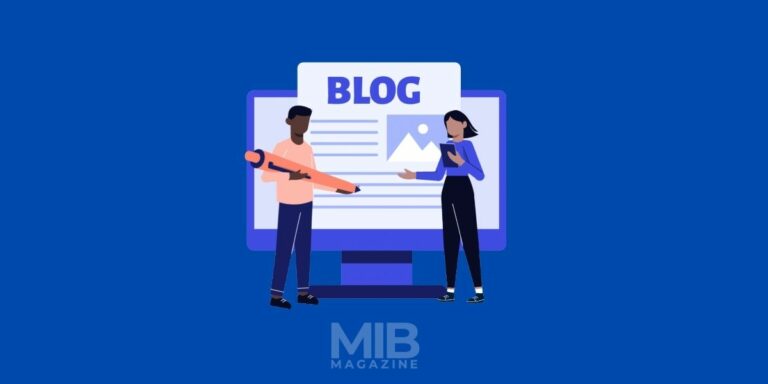Content Marketing Cheat Sheet: A Sensible Guide for Business Owners

“Content is king.”
You might find that this statement has been overused for years, but it is an adage that does still ring true today.
Proof of this is the steady growth of content marketing. Even with the advent of SEO, content had to be relevant both to humans and search engine bots. This is why business owners like you must become more well-versed on the matter (or at least hire people who are).
As the leader of an organization, you need to keep your content continuously flowing through multiple channels. Copywriting services in Dubai help make things easier, but the fact remains that you still need to study up and learn the most important things about content marketing. This article serves as an easy-to-use cheat sheet on the matter.
Critical Components in an Effective Content Marketing Plan
Before taking any step in crafting a content marketing plan, you must first learn about its five most critical components:
- Goals
Determine what actions you want your audience to take, like:
- Signing up for the company mailing list.
- Engaging with your content and sharing them on social media.
- Following the organization on social media.
- Click a link to know more about your products.
Your goals serve as the North Star of your content marketing plan. Without defining them clearly, you can’t measure the effectiveness of your strategy.
Having a clear set of goals also helps you decide whether to adjust or abandon a marketing effort.
Just remember that content marketing goals should not only be focused on sales. While sales does help drive purchases, the best content marketing plan nurtures leads and builds the company’s calls to action.
- Audience
Besides your goals, you also need to define your target audience to create and curate content that converts.
Many companies incorporate an audience persona in their brand strategies to clearly define who exactly they’re targeting. Having a clear image of who you’re communicating with – what they look like, what places they frequent, how they buy, and what language they use – makes it easier to develop an effective content marketing plan.
- Content
Great content for marketing should:
- Be engaging.
- Be entertaining.
- Be useful.
- Offer value to the audience.
Never ever publish low-quality content as it can be useless (at best), or worse – it can also be harmful to your brand. Never rush the content marketing plan to the point of delivering low-quality content.
Also, don’t forget to add variety to the content you share. Although they can be your website staple, blogs and written content can only bring you so far.
If possible, commission an infographic relevant to your brand or create a social media-worthy video on using your product. If you’re positioning to be an industry expert, hold a webinar and provide downloadable study materials.
Remember: The more types of content you offer, the more compelling and engaging your company becomes.
- Creators
Spending on copywriting costs with a third-party expert can be much more cost-effective than saving money on half-baked content.
You can always outsource content creation, but remember that it must be:
- Enough to build an editorial calendar for consistency and online presence.
- Optimized for search.
- Distributable across multiple channels outside your website.
Many content marketing agencies live and breathe this stuff. You can also hire top talent for your in-house team who will handle all your content marketing needs.
Regardless of who you choose to handle content creation, make sure you verify their competence with references and samples and set aside a budget for industry-standard top talent.
- Metrics
You also need to decide what metrics to use to measure your success in achieving the goals you’ve set. This can vary from one company to the next, but some of the things you’ll want to track in a content marketing plan are:
- Your landing page conversions.
- The growth of your blog subscribers.
- The number of follows or likes you received on social media.
- The average number and quality of comments your posts get.
- Bookmarks and social shares or retweets.
- Company or brand mentions on social media platforms.
- Mentions and backlinks from other websites.
A Step-by-Step Content Marketing Strategy Guide
Creating content isn’t the only thing that matters in a content marketing strategy. There are several steps to take based on the components you’ve identified, as follows:
Step #1: Identify consumer pain points.
Products and services aim to solve your target audience’s problems. Using this same idea, make sure your content sheds light on consumers’ pain points, and offer something in your content that can make their lives easier.
Your content strategy should support members of the audience from different levels of awareness and knowledge of your products and services, including:
- Those who are still figuring out the problem.
- Those who already use your offering to overcome those challenges.
Make sure your content reinforces the solutions your company provides and establishes credibility with your target audience.
Step #2: Highlight your unique selling proposition (USP).
Pay attention to your competition and determine what sets your company apart from them. Use your unique selling proposition (USP) to stand out not only in terms of your offerings but also in content marketing.
Identify your main asset or highlight your unique brand voice that’s different from the competition. Then, prove why people should be listening to and buying from you. All this should permeate the message of your content.
Step #3: Select a content format.
As mentioned earlier, a content marketing plan must have different types of content. However, most companies (especially small-to-medium enterprises) don’t have the capability to produce every content format out there.
That means you need to select a content format to focus on based on what your target audience is engaging with. Make sure you meet them where they are and speak their language (i.e., what platform they use and what type of content they engage with).
Step #4: Map the buying cycle.
You may be thinking: Why would I need a map of the buying cycle if I’m only after a content marketing plan?
Don’t forget that marketing must be correlated with conversions to be effective. How can you know if your marketing strategy is effective if you can’t measure how much came out of it?
When mapping the buying cycle, focus on three stages:
- Awareness: At this stage, your audience knows about your business but they’re not necessarily ready to act on it yet. You need content marketing to build upon that awareness.
- Consideration: Once they’ve been given more information about your company, they will take the time to consider whether to buy from you. In sales, this means guiding them through the process. However, content marketing requires gauging interest first through the numbers that turn up, including newsletter sign-ups, form submissions, and resource downloads.
- Decision: This is when prospects become buyers, which can be pushed with calls to action (CTAs). At this point, the audience could become paying customers, which is measured in order frequency, average order sizes, and sales.
Master Content Marketing
Mastering content marketing should be one of your goals as a company owner and leader. This will allow you to identify what works and what doesn’t, as well as determine if your team’s efforts and company resources are being put to good, profitable use.
AUTHOR BIO
Hisham Wyne is an award-winning copywriter, brand consultant and content creator based in Dubai. He has over a decade’s experience in helping brands get their messages right. From crisp web copy and zippy brochures to in-depth company profiles and analytical annual reports, Hisham makes words work for you – so you can sell better, gain visibility, and give your brand a unique voice.
FAQs
The legal requirements for starting a business may vary from one state to another, but generally include obtaining the proper license and permits, forming a business structure, and registering with the state. It is advisable to discuss these requirements with an attorney to ensure compliance.
Financing a business can take many forms, such as loans, investments, or contributions from family or friends. It is important to do your research and compare the different types of financing available, as well as to consider the advantages and disadvantages of each.
An accountant can help you manage your finances, including tracking revenue, expenses, and tax liabilities. Furthermore, they can also provide advice on cost savings and risk management, as well as helping you navigate complex financial regulations.
To set a budget for your business, it is important to identify your business’s objectives, assess the current financial situation, and develop a plan of action. It is also crucial to track ongoing spending and review the budget regularly to identify areas of overspending and make adjustments as needed.
When creating a business plan, it is important to include an overview of your business, a market analysis, an operational plan, financial projections, and a strategy for achieving success. Additionally, it is important to focus on both short-term and long-term goals.
The specific steps to register your business will vary depending on the type of business, but generally include selecting an appropriate business structure, registering with the state, and obtaining a federal employer identification number.
A sole proprietorship is an unincorporated business owned by one person, while an LLC, or limited liability company, is an incorporated business owned by multiple people. An LLC offers greater protection from personal liability than a sole proprietorship, but may involve greater paperwork and administration.
When hiring employees, it is important to conduct thorough background checks and be prepared to offer competitive salaries and benefits. Additionally, using a formal recruitment process and considering the skills and personalities that are best suited to the role can be beneficial.
Staying competitive in your industry requires you to stay informed of the latest trends, adopt innovative technology and practices, offer high-quality products and services, and provide exemplary customer service. Additionally, having a clear understanding of your competitors and their activities is essential.
Implementing security best practices and procedures can help protect your business from cyberattacks. Additionally, having an incident response plan, regularly backing up data, and training your staff in cyber security best practices can help minimize the risk of an attack.






